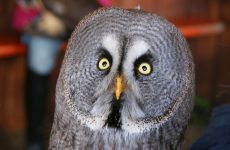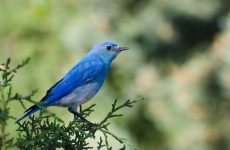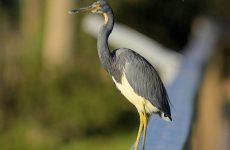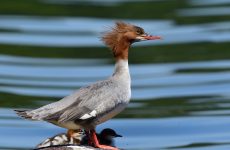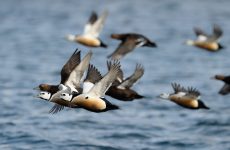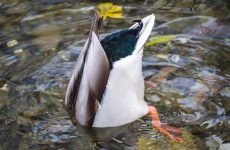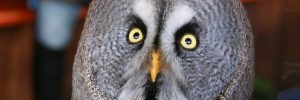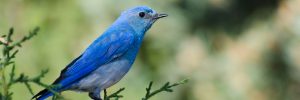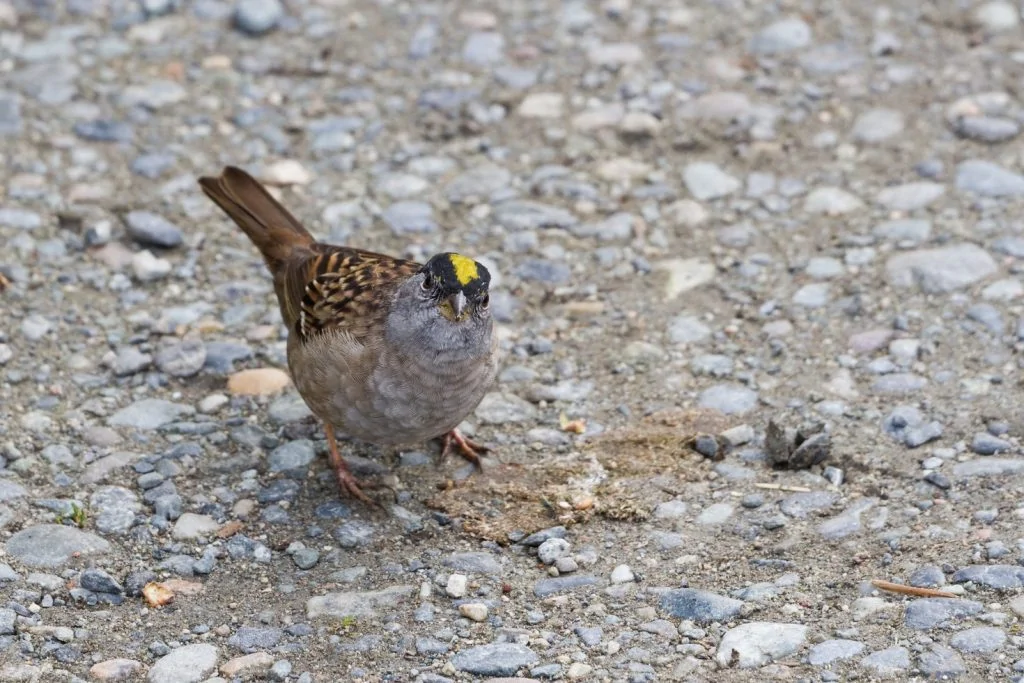
There are as many as 48 sparrow species in North America, and 8 of these sparrows have varying amounts of yellow on their heads. The most obvious one is the Golden-crowned Sparrow but check out the others to see if one of these is the sparrow you are trying to identify.
These “little brown jobs”, as they are affectionately called, often have brown feathers but very distinct head characteristics. We’ve compiled a list of Sparrows with Yellow Heads to help you identify these small birds.
Sparrows with Yellow Heads are small to medium-sized birds, ranging between four to seven inches (10-18 cm). Brown is the common color for these birds, but some have gray, orange, and white across their bodies. Some will also have streaking on their chests and backs.
While their yellow heads are their main similarity, Sparrows with Yellow Heads occupy varying habitats. Some reside in forests, while others are at home in swamps and wetlands. Some live in coastal areas, while others live in grasslands.
Sparrows with Yellow on their Heads:
- White-throated Sparrow
- Golden-crowned Sparrow
- Savannah Sparrow
- Swamp Sparrow
- Grasshopper Sparrow
- Seaside Sparrow
- Nelson’s Sparrow
- LeConte’s Sparrow
1. Golden-crowned Sparrow
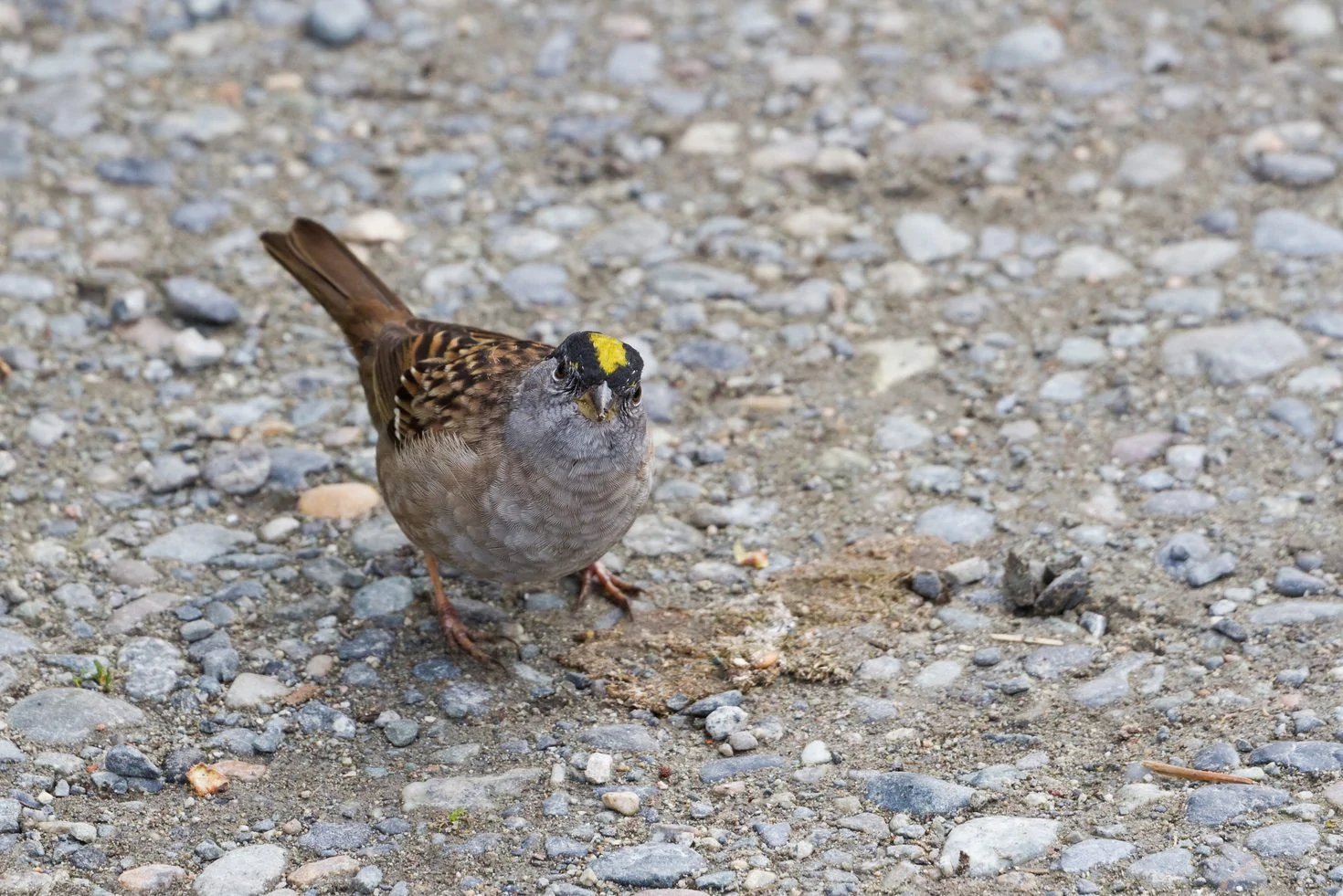
Golden-crowned Sparrows are grayish-brown underneath and streaked brown on the back. Their heads have a black crown and a bright-yellow forehead.
The colors are duller with brown on the crown in winter, and the yellow forehead is also duller.
- Zonotrichia atricapilla
- Length: 5.9-7.1 in (15-18 cm)
- Weight: 1.1-1.2 oz (30-33 g)
Golden-crowned Sparrows breed in Alaska and Western Canada before migrating to the West Coast for winter.
In winter, they can be found in weedy fields scratching for seeds such as dock, sumac, and geranium.
They also eat fruit such as apples, grapes, elderberry, and olives. Insects also make up some of their diets, such as ants, beetles, butterflies, and termites.
Golden-crowned Sparrows song: Their song is a sad, slow series of whistles that decrease in pitch.
Nests of Golden-crowned Sparrows are usually on the ground and made from twigs, moss, and leaves. They are lined with softer material, such as animal hair, grass, and feathers.
They lay around four eggs, which take just under two weeks to hatch and a further ten days for the young to fledge.
Attract Golden-crowned Sparrows to your backyard with seeds in ground feeders or plant native plants that fruit.
Fun fact: The gold crown of Golden-crowned Sparrows shows how dominant they are, with larger crowns showing more dominance. This helps to reduce fights amongst males.
2. White-throated Sparrow
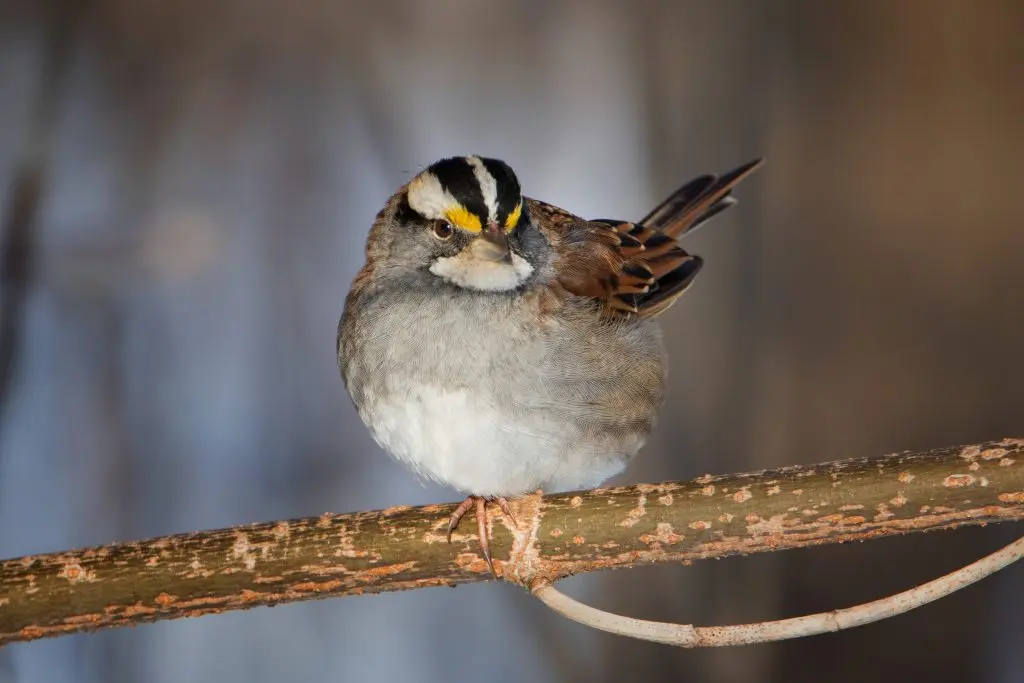
White-throated Sparrows have a distinctive black and white striped head, bright white throat, and yellow between the eye and bill. Their backs are brown, and underneath is gray.
- Zonotrichia albicollis
- Length: 6.3-7.1 in (16-18 cm)
- Weight: 0.8-1.1 oz (22-32 g)
- Wingspan: 7.9-9.1 in (20-23 cm)
White-throated Sparrows are migratory birds, breeding mainly in Canada before heading south in winter to Eastern and Southern States and the Pacific Coast.
You can find White-throated Sparrows on the ground in forests and woods and along the edges of wooded areas, often in large flocks.
White-throated Sparrows diet is mainly seeds of grasses and weeds as well as fruits such as grape, sumac, mountain ash, blueberry, blackberry, and dogwood. They will also eat a large number of insects from the forest floor, especially in summer.
White-throated Sparrow song: Their distinctive whistle is a few notes that change pitch once. They sound like a person whistling.
Nests of White-throated Sparrows are built by females, usually on the ground or low to the ground, in dense vegetation. They are made from moss and twigs, lined with softer material such as grass and animal hair.
They lay 1 – 6 eggs, which take around two weeks to hatch and a further week to two weeks for the young to fledge.
Attract the White-throated Sparrows to your backyard feeders with millet and black oil sunflower seeds on platform feeders.
Fun fact: White-throated Sparrows always breed with the opposite color morph, either tan-striped or white-striped heads.
3. Savannah Sparrow
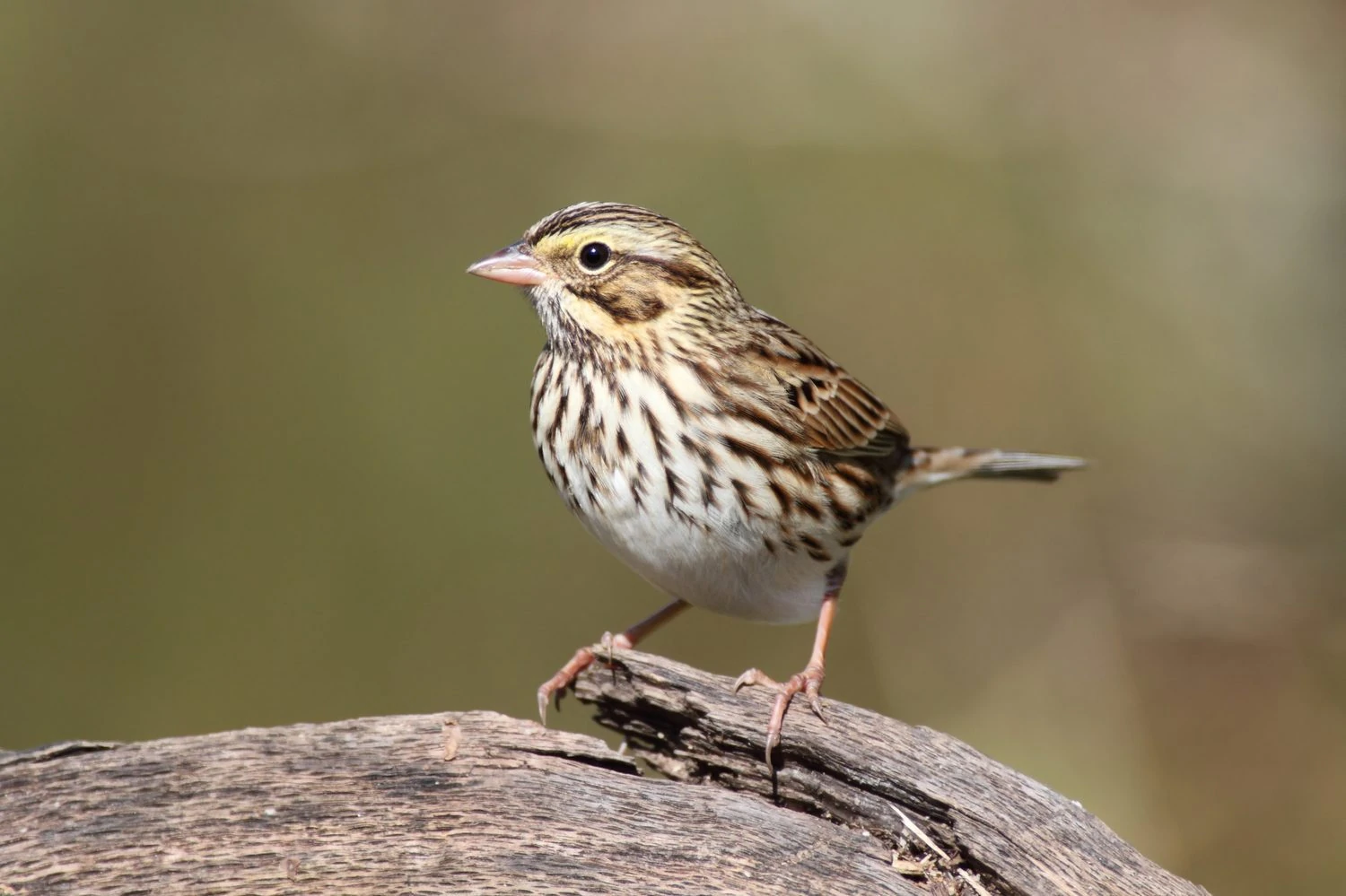
If you get a close enough look, you will see this brown sparrow has a distinctive yellow patch by the eye. They have short tails and a streaky brown coloring.
- Passerculus sandwichensis
- Length: 4.3-5.9 in (11-15 cm)
- Weight: 0.5-1.0 oz (15-28 g)
- Wingspan: 7.9-8.7 in (20-22 cm)
They breed in Canada and the US before migrating to Southern States and Mexico.
They feed on insects and spiders in the breeding season and seeds in the winter.
Savannah Sparrow song: An almost rushed sounding song, which a few fast notes followed by a buzzing trill.
Nests of Savannah Sparrows are on or near to the ground and made from grass. They lay up to six eggs, which take around two weeks to hatch and a further one or two weeks for the young to fledge.
These birds do not regularly visit feeders, but they may visit your yard if you keep brush piles, have long grass, and live near fields.
Fun fact: Although they are one of the most common songbirds in North America, they are considered a threatened species by the ICUN.
4. Swamp Sparrow
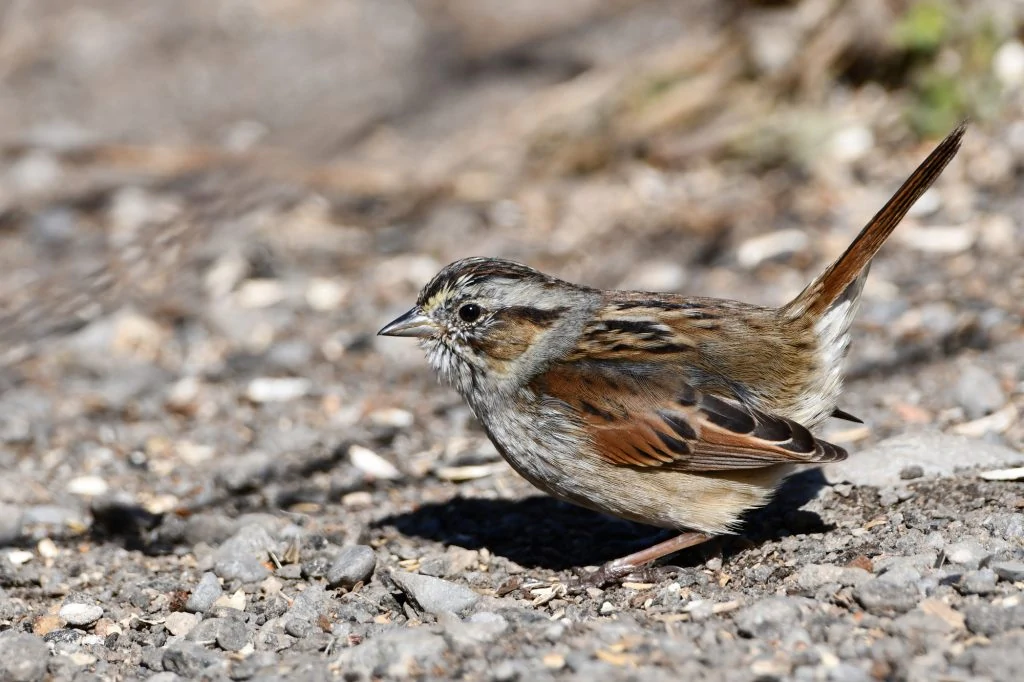
Swamp Sparrows are dark brown on the back with rusty crowns and wings. They have gray breasts and white throats. Their heads are gray and brown faces with a dark eye line and yellow end to the beak.
- Melospiza georgiana
- Length: 4.7-5.9 in (12-15 cm)
- Weight: 0.5-0.8 oz (15-23 g)
- Wingspan: 7.1-7.5 in (18-19 cm)
Swamp Sparrows breed in Canada and Northeastern and North Central US states before migrating to Eastern and Southern US states and Mexico.
As the name would suggest, Swamp Sparrows are found in wetlands, swamps, bogs, and coastal marshes. They feed on seeds and fruit, especially in winter, and insects in spring.
Swamp Sparrow song: Their song is a rapid trill of the same note.
Nests of Swamp Sparrows are usually hidden in vegetation on or close to the ground and made from twigs, leaves, and cattails and lined with grass and other plant material.
They lay up to six eggs, which take two weeks to hatch, and the young take a further one or two weeks to fledge.
Attract Swamp Sparrows do not visit backyards except in migration to yards with lots of vegetation and water.
Fun fact: Swamp Sparrows sing when it is still dark before dawn.
5. Grasshopper Sparrow
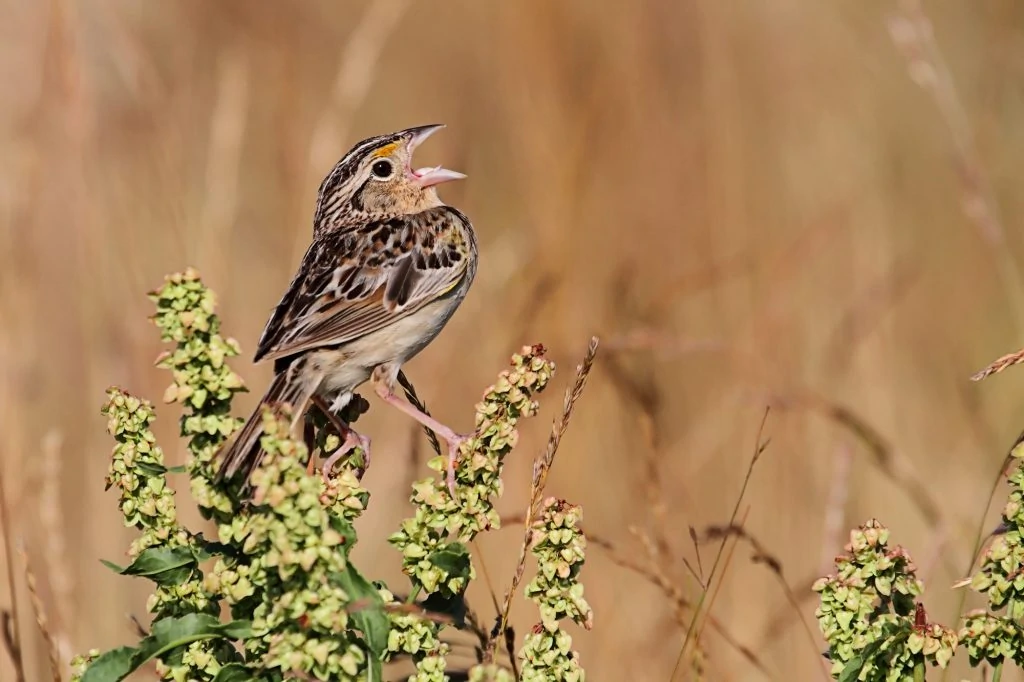
Grasshopper Sparrows are tiny birds with light and dark brown streaking and a distinctive orange or yellow stripe above their eye. They have short tails, large bills, and pale bellies.
- Ammodramus savannarum
- Length: 4.3-4.5 in (10.8-11.5 cm)
- Weight: 0.5-0.7 oz (14-20 g)
- Wingspan: 7.9 in (20 cm)
Grasshopper Sparrows breed in central and eastern US states, California’s coast, and parts of the northwest US. They spend winter in southeastern US states, Mexico, and the Caribbean.
You can find Grasshopper Sparrows on the ground in grassland and prairies or other open areas hunting for grasshoppers and other insects and spiders. In winter, they mostly eat fallen seeds.
Grasshopper Sparrow song: The buzzy insect-like song of the Grasshopper Sparrow is how they get their name.
Nests of Grasshopper Sparrows are on the ground in vegetation. They are made out of grasses and plant material, and they create a roof by weaving surrounding stalks creating an entrance on the side.
They lay up to seven eggs up to four times during the breeding season. The eggs take up to two weeks to hatch and a further week or so for the young to leave the nest.
Fun Fact: Grasshopper Sparrows violently shake their grasshopper prey to remove the large legs so that they can feed them to their young.
6. Seaside Sparrow
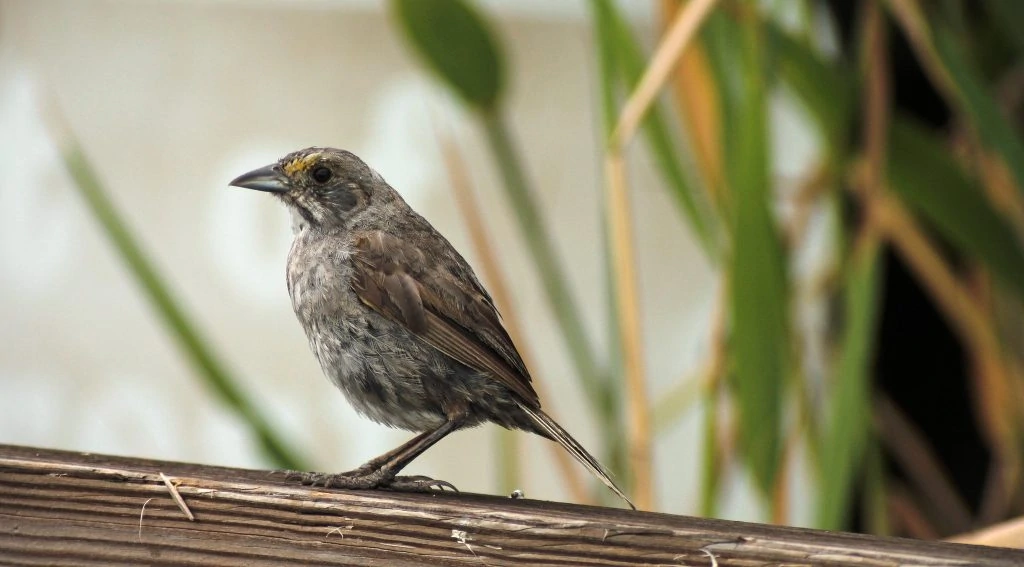
Seaside Sparrows are grayer than most sparrows, and they have a yellow spot in front of their eye. They are chunky birds with long bills.
- Ammospiza maritima
- Length: 5.1-5.9 in (13-15 cm)
- Weight: 0.7-1.0 oz (19-29 g)
- Wingspan: 7.1-7.9 in (18-20 cm)
As you can guess, Seaside Sparrows are found along the coast in salt marshes. They live along the Gulf and Atlantic coasts of the US, and those that breed in the north of their range migrate south, but the rest remain all year.
You can find Seaside Sparrows in marshes foraging for seeds, insects, and spiders. They also use their large bill for digging in the mud for tiny sea creatures.
Seaside Sparrow song:
Nests of Seaside Sparrows are built by females from grass tightly woven in tall marsh vegetation. They often build a cover from surrounding vegetation. They lay up to five eggs which take around two weeks to hatch and a further ten days for the young to leave the nest.
Fun fact: Young Seaside Sparrows cannot fly when they leave the nest, and they take a further week before they are confident flyers.
7. Nelson’s Sparrow
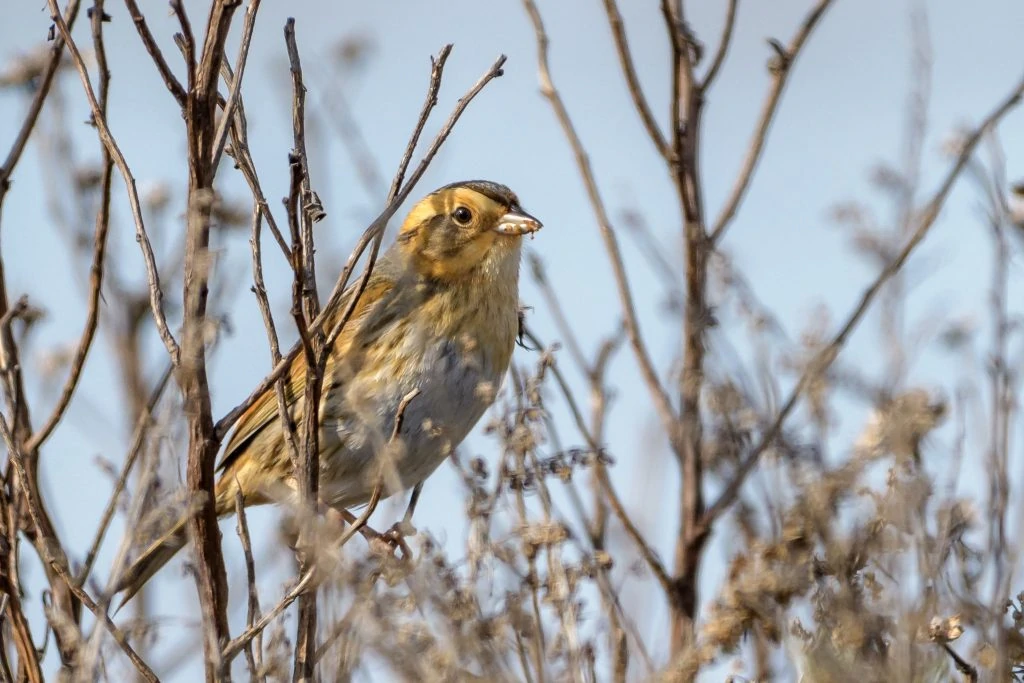
Nelson’s Sparrows are more orangy in color across the head and chest. Their backs are gray and brown-streaked, and their bellies are gray. Coastal birds are less bright in color than interior birds.
- Ammospiza nelsoni
- Length: 4.3-5.1 in (11-13 cm)
- Weight: 0.6-0.7 oz (17-21 g)
- Wingspan: 6.5-7.9 in (16.5-20 cm)
Nelson’s Sparrows breed mainly in central Canadian provinces, and then they migrate to the Gulf and Atlantic Coast for winter. They can be seen during migration across the Great Plains.
You can find Nelson’s Sparrows on the ground in wetlands in summer, foraging for seeds and insects. In winter, you can find them in saltwater and brackish marshes.
Nelson’s Sparrow song:
Nests of Nelson’s Sparrows are usually close to the ground and made from grass by the female. They lay up to six eggs which take under two weeks to hatch.
Fun fact: Nelson’s Sparrow males fly fast and far just above the marsh vegetation in a courtship display.
8. LeConte’s Sparrow
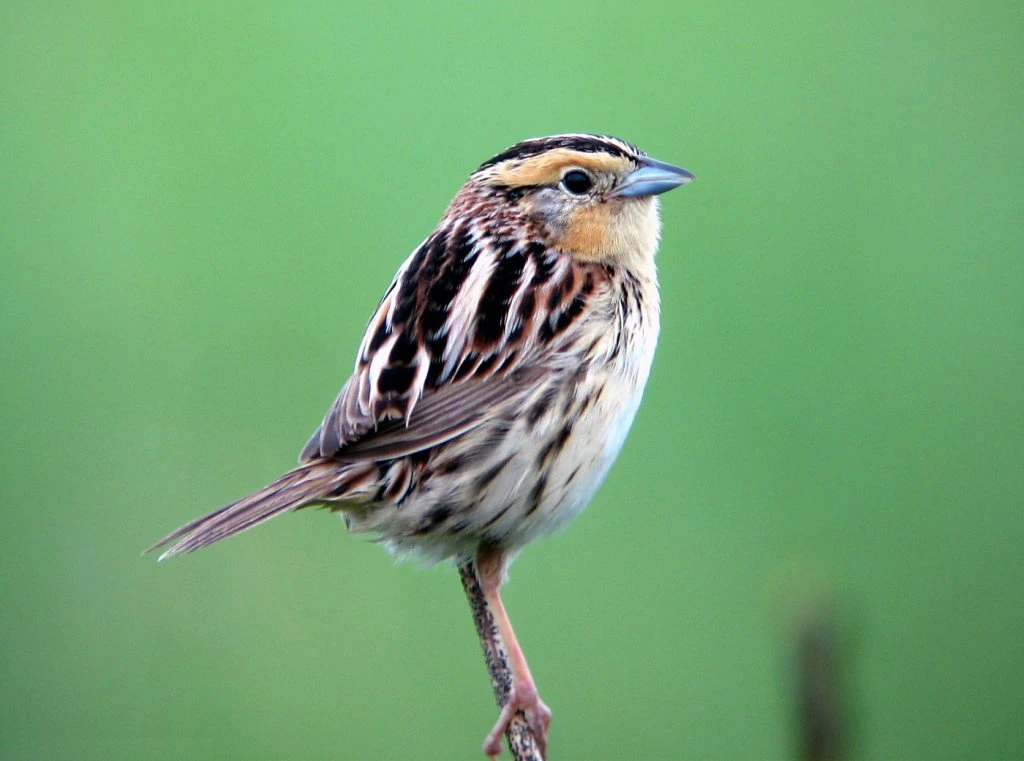
LeConte Sparrows are a dull orange with black streaks on their backs and wings. Their belly is white with pale orange across the chest. They have gray patches on their cheeks and a dark eyeline.
- Ammospiza leconteii
- Length: 4.7-5.1 in (12-13 cm)
- Weight: 0.4-0.6 oz (12-16.3 g)
- Wingspan: 6.3-7.1 in (16-18 cm)
LeConte’s Sparrows breed mainly in Canada and migrate to the south-central US states. They can be seen during migration over the Great Plains.
You can find Le’Conte’s Sparrows on the ground for seeds and insects in dense grassland that is marshy or boggy. Unfortunately, they are so small and shy that they can be hard to spot.
LeConte’s Sparrow song:
Nests of LeConte’s Sparrows are near to the ground, hidden in dead grass and rushes and made from grass. They lay around five eggs which take about ten days to hatch.

